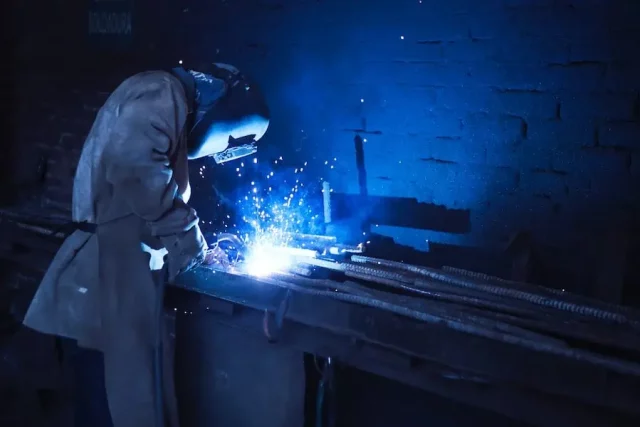Welding is a fascinating and essential skill in various industries, ranging from construction to automotive repair. Whether you are a beginner or someone looking to expand your knowledge, understanding the fundamentals of welding is crucial. In this article, we will explore eight useful things you should know about welding, providing you with valuable insights and tips to enhance your welding expertise.
Safety First: Protecting Yourself And Others
Welding involves working with high temperatures, sparks, and hazardous fumes, making safety precautions of paramount importance. Before starting any welding project, ensure you have the necessary protective gear, including a welding helmet with a proper auto-darkening lens, flame-resistant clothing, welding gloves, and steel-toed boots. Additionally, adequate ventilation is crucial to prevent exposure to harmful fumes, so make sure to work in a well-ventilated area or use ventilation equipment. Never overlook safety protocols, as they are vital for both your well-being and the safety of others around you.
Selecting The Right Welding Process
There are various welding processes available, each suitable for different applications. The most common welding methods include MIG (Metal Inert Gas) welding, TIG (Tungsten Inert Gas) welding, and Stick welding. MIG welding is ideal for beginners, as it offers ease of use and versatility, allowing you to weld various metals. TIG welding, on the other hand, provides precise control and is perfect for intricate projects and welding thinner materials. Stick welding is a reliable and cost-effective process that works well in outdoor or windy conditions. Understanding the strengths and limitations of each welding process will enable you to choose the most appropriate one for your specific project.
Material Selection And Preparation
Before starting any welding project, it is crucial to consider the type of material you will be working with. Different metals have varying properties and require specific welding techniques. For instance, mild steel is commonly welded using MIG or Stick welding, while aluminum typically requires TIG welding due to its high thermal conductivity. Stainless steel may require specialized techniques, such as pulsed MIG or TIG welding. Additionally, proper preparation of the material is vital. Ensure the metal surfaces are clean, free from rust, paint, or any contaminants that can affect the quality of the weld. Use appropriate cleaning methods, such as wire brushing or grinding, to achieve a clean welding surface.
Mastering Welding Techniques: Practice Makes Perfect
Welding is a skill that requires practice and honing your technique. As seen at Hitec Welding, one essential technique to master is maintaining a steady hand. A steady hand ensures precise control and helps create clean and aesthetically pleasing welds. Practice maintaining a steady hand by using slow and deliberate motions while welding. Additionally, understanding the proper angle and positioning of the welding torch or electrode is crucial.
Experiment with different angles and positions to find what works best for each welding process and material. Remember, practice is key to improving your welding skills and achieving consistent and high-quality welds.
Understanding Welding Joints: Strength And Durability
Welding joints are the areas where two or more metal pieces are joined together. Understanding different types of welding joints is essential for creating strong and durable welds. Some common types of welding joints include butt joints, lap joints, corner joints, and T joints. Each joint has its welding technique and considerations. For example, butt joints require proper edge preparation and penetration to ensure a strong weld, while lap joints rely on proper fusion and overlap. Take the time to learn about the various welding joints and their specific requirements, as this knowledge will greatly impact the strength and longevity of your welds.
Welding Inspection And Quality Control
After completing a weld, it is crucial to inspect and evaluate its quality. Welding inspection helps identify any potential defects or imperfections that may compromise the integrity of the weld. Visual inspection involves examining the weld for surface irregularities, such as cracks, porosity, or incomplete fusion. Non-destructive testing methods, such as X-ray or ultrasonic testing, can be used for more in-depth inspection of critical welds. Quality control measures, such as following industry standards and proper documentation, play a significant role in ensuring the reliability and safety of welded structures. Developing a keen eye for detail and regularly conducting thorough inspections will help you maintain high standards of quality in your welding projects.
Heat Control And Welding Parameters: Fine-Tuning The Process
Achieving optimal heat control and understanding welding parameters are crucial for producing high-quality welds. The heat input during welding affects the penetration depth, fusion, and overall strength of the weld. By adjusting the welding parameters such as voltage, current, wire feed speed, or travel speed, you can control the heat input. Finding the right balance of these parameters for each specific welding project and material is essential. It often requires experimentation and adjustment to achieve the desired results.
Pay close attention to the welding parameters and make gradual adjustments while observing the weld pool and the appearance of the weld bead. With practice, you will develop a better understanding of heat control and be able to fine-tune the welding process for optimal results.
Post-Welding Treatment: Ensuring Strength And Durability
The work doesn’t end once the weld is completed. Proper post-welding treatment plays a significant role in ensuring the strength and durability of the weld. One important step is to remove any welding slag or spatter using a wire brush or chipping hammer. This will help reveal the clean weld and prevent any potential contamination. Depending on the material, you may need to perform additional treatments such as stress relieving or heat treatment to relieve internal stresses and enhance the weld’s mechanical properties.
Proper cleaning and surface finishing, such as grinding or sanding, can also improve the appearance and resistance to corrosion. Remember to follow the recommended post-welding treatment procedures for the specific materials and welding processes used in your project to achieve the best possible outcome.
Welding is a versatile and valuable skill that opens doors to a wide range of opportunities. By focusing on heat control, understanding welding parameters, and implementing effective post-welding treatment, you can elevate the quality and durability of your welds. Remember that welding is a continuous learning process, and with each project, you gain valuable experience and insights. Embrace the challenges, stay curious, and strive for excellence in your welding endeavors. With dedication and a commitment to mastering the craft, you can become a skilled welder capable of creating strong, reliable, and aesthetically pleasing welds.
So, grab your welding gear, ignite your passion, and embark on a journey of endless possibilities in the world of welding.














